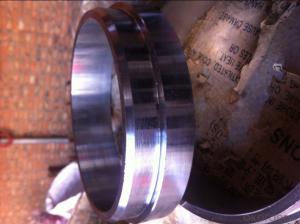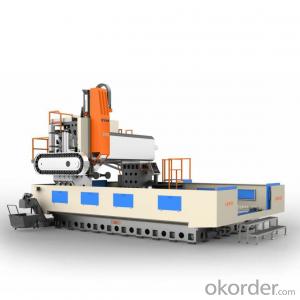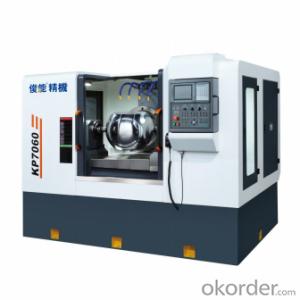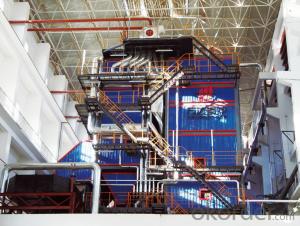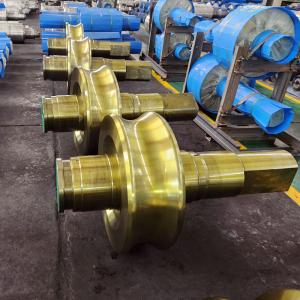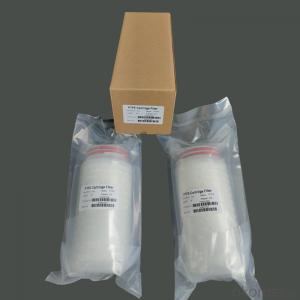SCHWING single side flange dn 125 width 35mm
- Loading Port:
- Tianjin
- Payment Terms:
- TT or LC
- Min Order Qty:
- 100 set
- Supply Capability:
- 5000 set/month
OKorder Service Pledge
OKorder Financial Service
You Might Also Like
Product Description:
Product Name: Concrete Pump Flange
1. Specification of Concrete Pump Flange
Materials: Steel 20
Inner Diameter: 125mm
Notes: total series of concrete pump elbows for different brand concrete pump(PUTZMEISTER, SCHWING, CIFA, SANY, ZOOMLION, IHI, KYOKUTO Etc)available from us.
2. Application of Concrete Pump Flange
Our concrete pump elbows have been successfully exported to many countries from 1998, Our main markets asbelow: Middle East, Southeast Asia, America, Brazil, Italy, Russia, South Africa etc
Aiming at the largest concrete pump parts manufacturer, and reliable, professional supplier in China, we can
supply concrete pump elbows, delivery pipes, casting or forging couplings, end rubber hoses, rubber pistons,
tungsten wear plates, delivery cylinders, and other hydraulic parts, one stop service for your concrete pump
parts and accessory business.
3. Package and Delivery of Concrete Pump Flange
Every 60pcs put in one seaworthy wooden box, and 20 boxes in one 20feet container.
Optional wood materials: veneer wood or other wood.
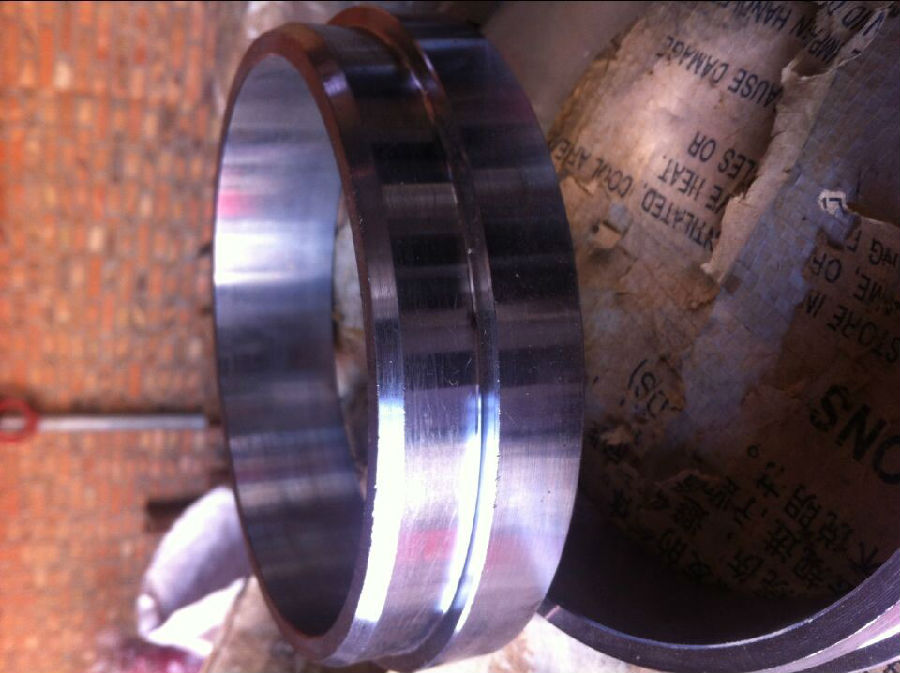
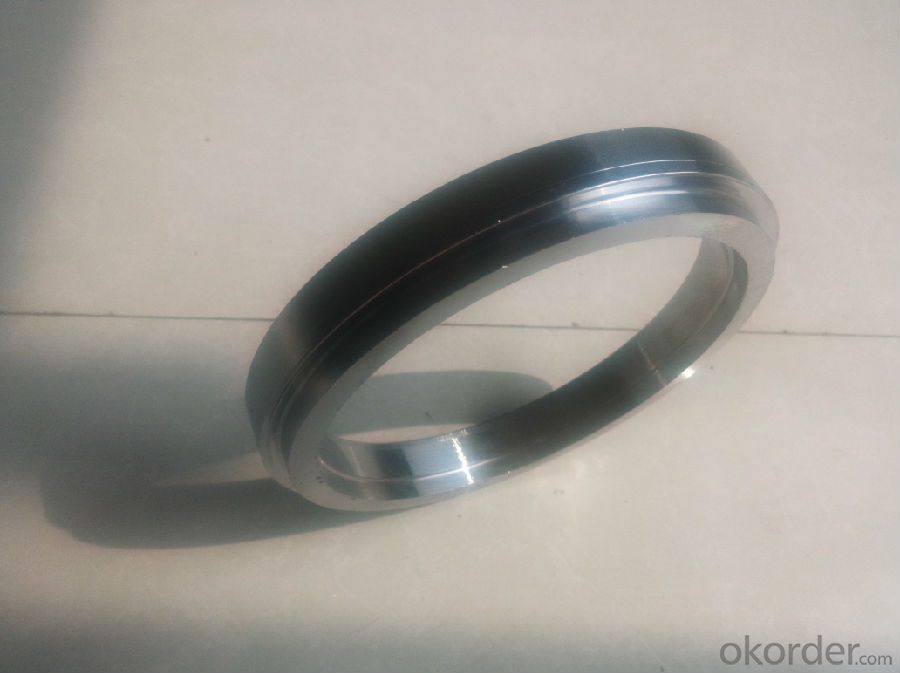

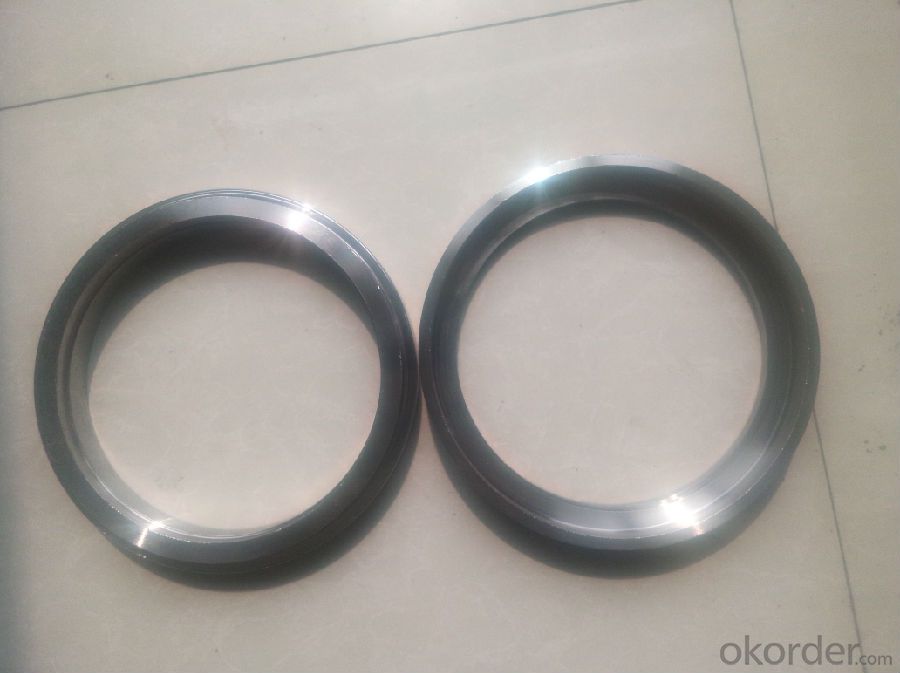
- Q:What are the different types of concrete pump clamps?
- There are several different types of concrete pump clamps, including snap clamps, bolt clamps, wedge clamps, and quick release clamps. These clamps are used to secure pipes and hoses in place and ensure a tight and secure connection during concrete pumping operations.
- Q:Are there any specific tools or equipment required for the installation of concrete pump spare parts?
- Concrete pump spare parts installation requires specific tools and equipment. The necessary tools include wrenches and sockets for bolt and nut tightening, hydraulic jacks for lifting heavy parts, and a crane or hoist for positioning extremely heavy components. To ensure secure installation, a torque wrench is used to tighten bolts to the correct torque specifications. Lubrication is achieved using a grease gun to apply grease to moving parts. Measuring tools like tapes or rulers are used for precise positioning and alignment. Safety goggles, gloves, and other protective gear should be worn during the installation process to prevent injuries. It is crucial to consult the manufacturer's instructions or seek professional assistance for proper installation, as the required tools and equipment may vary depending on the concrete pump's type and complexity.
- Q:How can a faulty battery affect the operation of the pump?
- A faulty battery can significantly affect the operation of a pump. Firstly, a faulty battery may not provide enough power to the pump, resulting in slow or weak pumping action. This can impact the pump's ability to generate the necessary pressure or flow rate, leading to inefficient or ineffective operation. Additionally, a faulty battery may cause intermittent power supply to the pump. This can result in inconsistent pumping action, with the pump starting and stopping sporadically. Such interruptions can create inefficiencies, reduce the pump's performance, and potentially cause damage to the equipment or system being operated. Furthermore, a faulty battery may not hold a charge for an extended period. This can limit the pump's runtime, requiring frequent recharging or replacement of the battery. In scenarios where a pump is needed for continuous or prolonged usage, a faulty battery can disrupt operations, leading to downtime and reduced productivity. Moreover, a faulty battery can also impact the overall lifespan of the pump. If the battery does not provide the necessary power consistently, the pump may experience strain or excessive wear, potentially shortening its operational life. Overall, a faulty battery can have various adverse effects on the operation of a pump, including reduced performance, inconsistent pumping action, limited runtime, potential damage, and decreased equipment lifespan. Regular maintenance and timely replacement of faulty batteries are crucial to ensure optimal pump performance and longevity.
- Q:How do I properly maintain and replace wear plates in concrete pump spare parts?
- Achieving optimal performance and durability for your equipment relies heavily on the proper maintenance and replacement of wear plates in concrete pump spare parts. To ensure that your wear plates are adequately maintained and replaced, the following steps can be taken: 1. Conduct regular inspections: It is crucial to regularly inspect the wear plates in your concrete pump spare parts in order to identify any signs of wear or damage. Look for visible indications such as cracks, excessive wear, or deterioration. 2. Thoroughly clean the area: Prior to replacing the wear plates, it is essential to thoroughly clean the surrounding area. Remove any debris, dirt, or hardened concrete that may be present. Utilize a pressure washer or wire brush to effectively clean the surface. 3. Measure the thickness of wear plates: Utilize a precision measuring tool to determine the thickness of the wear plates. Compare the current thickness with the manufacturer's recommended specifications to determine if replacement is necessary. If the wear plates are below the recommended thickness, replacement is required. 4. Remove the old wear plates: Carefully remove the old wear plates using the appropriate tools. Take note of their positions and any alignment marks to ensure proper installation of the new plates. 5. Prepare the new wear plates: Prior to installing the new wear plates, verify that they are the correct size and meet the required specifications for your concrete pump. Inspect the new plates for any defects or damage before proceeding. 6. Apply lubrication: Apply a thin layer of lubricant or anti-seize compound to the mating surface of the new wear plates. This will aid in preventing corrosion and facilitate future replacements. 7. Install the new wear plates: Position the new wear plates accurately, aligning them with any reference marks or indicators. Secure them tightly using suitable bolts or fasteners, taking care not to overtighten. 8. Test and check alignment: After installing the new wear plates, perform a test run of the concrete pump to ensure proper functionality. Check for any leaks, uncommon vibrations, or misalignments. If any issues are detected, address them promptly. 9. Establish a regular maintenance schedule: To prevent premature wear and damage to the wear plates, create a routine maintenance schedule. This may involve cleaning, lubricating, and inspecting the wear plates at specified intervals or after a certain number of operational hours. By adhering to these steps and adopting a proactive approach to wear plate maintenance and replacement, you can guarantee the seamless operation and extended lifespan of your concrete pump spare parts.
- Q:How often should hopper agitator blades be inspected or replaced in a concrete pump?
- Regular inspection and replacement of hopper agitator blades in a concrete pump is essential. The frequency of these actions depends on several factors, such as usage, concrete type, and operating conditions. Typically, it is advised to inspect the hopper agitator blades every three to six months. This allows for early identification of any wear, damage, or deterioration. However, if the pump is heavily used or operates in harsh conditions, more frequent inspections may be required, possibly monthly or even weekly. During inspections, it is important to check for cracks, chips, or excessive wear on the blades. Additionally, any accumulated hardened concrete or debris should be removed to ensure optimal performance. If significant damage or wear is detected, prompt replacement of the blades is necessary to prevent further deterioration and potential breakdowns. It is worth noting that regular maintenance and proper cleaning of the hopper agitator blades can extend their lifespan. Following the manufacturer's recommendations for maintenance, including lubrication and cleaning, can significantly reduce the need for frequent replacements. Ultimately, the frequency of inspections and replacements for hopper agitator blades in a concrete pump should be determined based on the specific conditions and usage of the pump. Consulting the manufacturer's guidelines is advisable for more specific recommendations.
- Q:What is the role of a concrete pump hopper vibrator?
- The smooth and efficient flow of concrete through the pump system is ensured by the concrete pump hopper vibrator. Typically, the vibrator is attached to the hopper, which is the container holding the concrete mixture. To break up any air pockets or clumps in the concrete, the vibrator creates high-frequency vibrations. This allows the concrete to flow freely through the pump and out of the nozzle. Proper vibration is essential, as unclogged or unblocked concrete prevents delays and inefficiencies in construction. Not only does the hopper vibrator facilitate concrete flow, but it also enhances the overall concrete quality. By eliminating air pockets and ensuring a smooth, consistent flow, the vibrator reduces the risk of voids or weak spots in the finished structure. In conclusion, the concrete pump hopper vibrator plays a crucial role in ensuring successful and efficient concrete pumping, while also improving the quality of the final product.
- Q:Are there any specific guidelines for the disposal of packaging materials of concrete pump spare parts?
- Packaging materials of concrete pump spare parts have specific guidelines for disposal. It is advised to adhere to local waste management regulations and authorities' guidelines. To begin with, it is essential to separate the various packaging materials, such as cardboard boxes, plastic wraps, foam inserts, and other materials used for packaging the spare parts. This will facilitate efficient recycling or appropriate disposal of each material. Cardboard boxes can usually be recycled by flattening them and placing them in designated recycling bins. Plastic wraps should also be separated and discarded in specific plastic recycling bins. Foam inserts, commonly used for spare parts protection, may not be recyclable in all areas, so specific recycling instructions should be checked. If recycling is not possible, foam inserts can be disposed of in regular waste bins. Before disposal, it is important to ensure that all packaging materials are free from any residual concrete or other hazardous substances. Any contamination should be cleaned or removed properly to prevent environmental pollution. If the packaging materials cannot be recycled or disposed of through regular waste management methods, it is recommended to contact local recycling centers or waste management facilities to inquire about specific disposal options. They may offer guidance or accept these materials for specialized processing or disposal. Overall, responsible waste management practices should be prioritized, and compliance with local authorities' specific guidelines is crucial to ensure proper disposal of packaging materials for concrete pump spare parts.
- Q:How long does it take to replace a specific concrete pump spare part?
- The duration required to replace a specific spare part for a concrete pump can vary based on several factors. Initially, the replacement time will be influenced by the complexity and size of the part. Smaller and simpler parts can be swapped out relatively quickly, whereas larger and more intricate components may necessitate a lengthier process. Additionally, the availability of the spare part is a crucial consideration. If the part is readily accessible and in stock, the replacement procedure can be expedited. Conversely, if the part must be ordered or obtained from a supplier, there may be a delay in receiving it, thereby extending the overall replacement time. Moreover, the competence and experience of the individual or team carrying out the replacement will also impact the duration. Trained and skilled professionals are likely to complete the replacement more efficiently compared to those with limited knowledge or experience. Lastly, unforeseen complications or issues that arise during the replacement process can also affect the time required. It is possible that additional repairs or adjustments may be necessary, which could further prolong the replacement time. In conclusion, the duration for replacing a specific spare part for a concrete pump is dependent on the part's complexity and size, its availability, the expertise of the individuals performing the replacement, and any unforeseen complications that may arise. Therefore, it is challenging to provide an exact timeframe without taking these factors into consideration.
- Q:Can concrete pump spare parts be customized according to specific requirements?
- Yes, concrete pump spare parts can be customized according to specific requirements. Customization allows for the adaptation of parts to meet specific needs such as size, shape, material, or functionality. This enables better compatibility and enhances the efficiency and performance of concrete pumps.
- Q:What is the function of a concrete pump hopper grate handle?
- The function of a concrete pump hopper grate handle is to provide a means of manually controlling the opening and closing of the hopper grate on a concrete pump. The hopper grate is a crucial component of the pump that allows for the introduction of concrete into the pumping system. By operating the handle, the operator can adjust the position of the grate to regulate the flow of concrete and prevent any large debris or foreign objects from entering the pumping system. This helps to ensure the smooth operation of the pump and maintain the quality of the concrete being pumped. Additionally, the handle allows for easy and convenient access to the hopper grate for maintenance and cleaning purposes. Overall, the concrete pump hopper grate handle plays a vital role in controlling the flow of concrete and maintaining the efficiency and reliability of the pumping process.
1. Manufacturer Overview |
|
|---|---|
| Location | |
| Year Established | |
| Annual Output Value | |
| Main Markets | |
| Company Certifications | |
2. Manufacturer Certificates |
|
|---|---|
| a) Certification Name | |
| Range | |
| Reference | |
| Validity Period | |
3. Manufacturer Capability |
|
|---|---|
| a)Trade Capacity | |
| Nearest Port | |
| Export Percentage | |
| No.of Employees in Trade Department | |
| Language Spoken: | |
| b)Factory Information | |
| Factory Size: | |
| No. of Production Lines | |
| Contract Manufacturing | |
| Product Price Range | |
Send your message to us
SCHWING single side flange dn 125 width 35mm
- Loading Port:
- Tianjin
- Payment Terms:
- TT or LC
- Min Order Qty:
- 100 set
- Supply Capability:
- 5000 set/month
OKorder Service Pledge
OKorder Financial Service
Similar products
New products
Hot products
Related keywords
